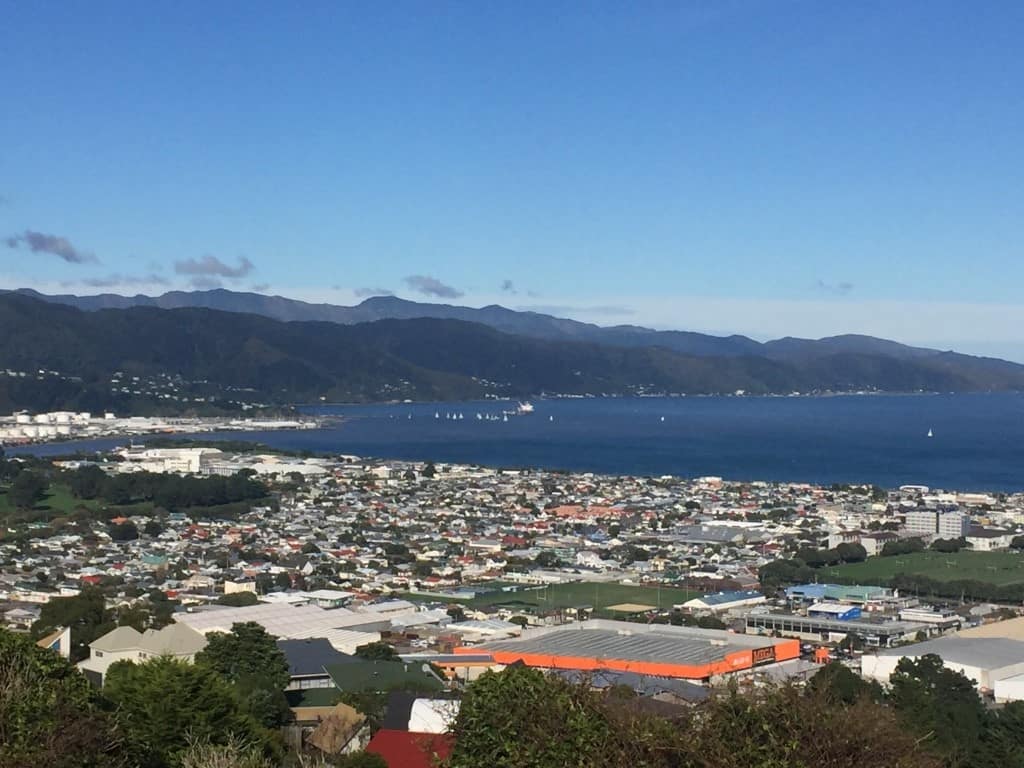Understanding how the people of Petone and Eastbourne responded to the 2016 Kaikōura earthquake and subsequent tsunami warning
13/07/2018
By Denise Blake
When an earthquake is ‘long or strong’, the directive is that people need to ‘get gone’. This simple message is used to educate the people of Aotearoa New Zealand about tsunami risk and what to do following a significant earthquake. The national message encourages people to move inland or upward and away from a potential tsunami. However, little is known about how people do respond after an actual earthquake and tsunami threat, and little is known about people’s evacuation behaviour.

In 2016, a magnitude 7.8 earthquake struck the northeast coast of the South Island of Aotearoa New Zealand, destroying buildings and critical infrastructure. Two people lost their lives. Named the Kaikōura earthquake, it lasted approximately 2 minutes and was felt widely throughout the South and North Islands.
The earthquake produced a local-source tsunami that reached the Wellington region within 30 minutes. Fortunately, the largest wave was only about 60 centimeters in height and took between 1-5 hours to reach shore. No tsunami warning occurred immediately following the earthquake, however after approximately one-hour, an official tsunami warning was issued and people in tsunami risk zones were urged to evacuate. It was considered necessary for the residents of the Petone and Eastbourne areas of the Hutt Valley, Wellington region to evacuate. They were officially warned through social media and activation of the Lower Hutt flood siren.
The quake presented an important source of knowledge to better understand how communities react to earthquakes and tsunami warnings. Wanting to draw from that knowledge, researchers from the Joint Centre for Disaster Research (Massey University/GNS Science) conducted citizen science research in Petone and Eastbourne about three weeks after the Kaikōura earthquake. This citizen science approach involved researchers and key people from Petone and Eastbourne Community Boards gathering, and engaging others to gather, survey data over a two-week period. People were surveyed at a range of sites, including on the street, at local fairs, doctor’s surgeries, on the ferry and at a local supermarket and gym. In total 409 surveys were completed, 245 from Petone and 164 from Eastbourne.
The two suburbs are very different geographically. Petone is located on a flood plain and surrounded by the Hutt River and two transport corridors, a rail line and State Highway 2. Eastbourne is located on a narrow coastal flat area with higher ground directly behind. In this way, Eastbourne residents have less time to travel to safety than the Petone residents.
The study showed that of the total number of people that responded to the survey, 69% evacuated, but only 33% did so within the crucial 10-minute natural warning time. The ‘long or strong, get gone’ campaign stipulates that should an earthquake be so strong that it is hard to stand up, or lasts longer than a minute then people near a coastline should go to higher ground or inland quickly. Supporting information also advises that people should evacuate by walking or biking. That 64% of the total respondents felt that the earthquake lasted for more than one minute, and 70% felt it was violent and severe but did not evacuate immediate is concerning. Only 11% of respondents reported evacuating because of the earthquake. Traffic jams and congestion were also reported by Petone respondents as 78% said they evacuated by car, and only 2% by foot. Of the Eastbourne respondents 42% said they left by car and 15% by foot. Petone residents mostly said they went inland or up a surrounding hill, while Eastbourne residents had easy access to high ground due to the high terrain in that area. Interestingly, 3% of Eastbourne residents still traveled along the coastal road towards Lower Hutt to evacuate.
Overall this citizen science research project demonstrated that there is an urgent need to engage people in tsunami preparedness and evacuation behaviours. The public need to understand that an earthquake provides the most natural and reliable warning system. They need to respond to the earthquake, or any agency-generated tsunami warning, immediately in a way that is safe and efficient and which ensures safety for themselves and the wider community.



